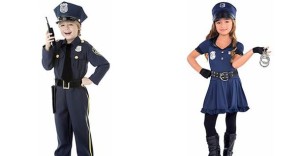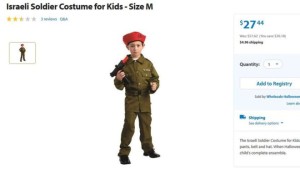Halloween, offensive costumes, and bad publicity
For most retailers, the four-month long “holiday season” is rife with opportunity for public relations outreach. There’s plenty of news stories to latch on to, seasonal product launches, and holiday editions of magazines eager to feature businesses and their stories. However, the first holiday in the lineup, Halloween, seems to churn out a disproportionate amount of mistakes and negative publicity for businesses.
Each year, a number of retailers come under fire for offering tacky, tasteless, and downright offensive costumes in their Halloween product line. Seemingly ignorant to the multitude of examples from years past, businesses put costumes front and center that are obviously a bad decision in terms of brand reputation. 2015 was no different, and some major players had enormous slip-ups in October.
Party City, a major event supplies retailer, took the bad-taste cake this year with not one, but two separate instances of public outcry over their costumes. In September, one mother penned an open letter on Party City’s Facebook page expressing her disappointment with their selection of sexualized girls’ costumes, mentioning a police officer costume in particular. Many national news outlets picked up the story, and a debate ensued about what constitutes an appropriate costume for little girls. This week, Party City was again the focus of internet outrage after another woman took to social media to complain about the store’s inclusion of stereotypical Native American costumes.
The event supplies store wasn’t alone in their choice to include costumes that can be seen as racially-insensitive or degrading to certain cultures. Walmart recently pulled two costumes, an “Arab Sheikh” outfit that included a hook nose, and a children’s Israeli Solider getup. The big box store has also frequently pulled costumes in years past, including one meant to depict a mental hospital patient, and some locations decided against selling “Caitlyn Jenner” costumes earlier this fall. Amazon, however, went full-steam ahead on offering a “lady boy drag” outfit in its UK stores, before quickly removing it after complaints.
It is true that many of these mistakes happen because large corporations don’t allow for higher-ups to approve every product, especially when they allow outside retailers, like Amazon. Public relations teams are meant to help clean up after messes like these. Unfortunately, none of the above retailers offered a good example of what this type of crisis communication should look like. Walmart and Amazon both went with a canned “not our fault, the product has been removed” statement, neither of which truly apologized to consumers. Party City took an even worse track. The store first deleted the mother’s post and then blocked her from their page, and followed suit with those who posted in support of her. The woman repeatedly tried to contact Party City directly and was ignored. Only after the story gained media attention did the store issue a statement, which offered to speak to her directly. However, the apology was marred by the store’s instance that the costume was one of their “most popular.”
So what should a retailer do when called out for an offensive Halloween costume? There’re three fairly simple steps:
- Remove the outfit from sale immediately.
- Issue an apology that admits the outfit was a mistake, and that the store understands why.
- Go through the rest of the store’s inventory to ensure there are not any other costumes just waiting to induce outrage.
Of course, not all internet outrage deserves a response, but the above examples show stores clearly on the wrong side of the argument. Halloween also can be a chance to stretch some boundaries that businesses can’t during other times of the year, but it should be calculated and thought through. The holiday can be an opportunity for some unique publicity, but businesses have to make sure it’s of the fun variety, not the scary.

